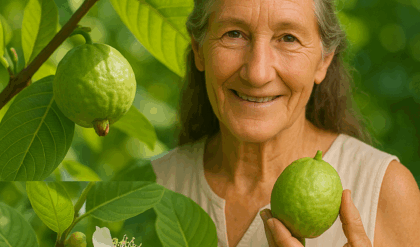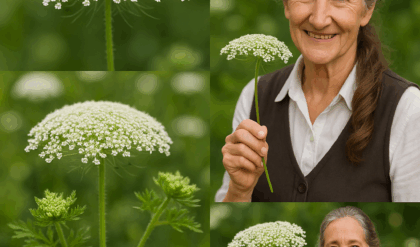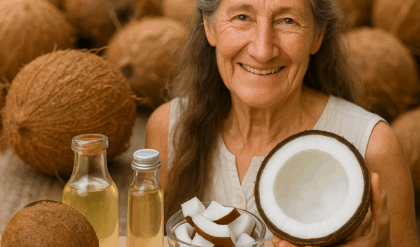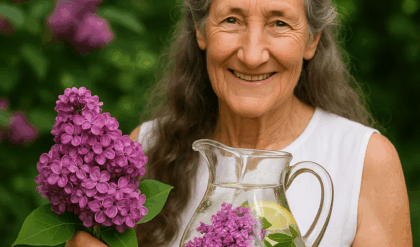Diphylleia grayi, also known as the Skeleton Flower, is a rare and mystical plant that captivates nature lovers with its unique transformation. Found in the cool, mountainous regions of Japan, China, and the Appalachian Mountains in the United States, this delicate flower has an extraordinary ability—when exposed to water, its pure white petals turn transparent, resembling ethereal glass.

Often referred to as Diệp Hà Sơn in Vietnamese or simply “Hoa Xương” (Bone Flower), this plant symbolizes transformation, resilience, and purity. Beyond its mesmerizing appearance, Diphylleia grayi also holds medicinal and ecological value, making it a truly fascinating specimen in both botanical and scientific communities.
🌿 Scientific Name: Diphylleia grayi
🌍 Native Regions: Japan, China, Appalachian Mountains (USA)
🌸 Common Names: Skeleton Flower, Diệp Hà Sơn, Hoa Xương
🌧️ Unique Feature: Turns completely transparent when wet!
🌟 Why Is Diphylleia Grayi Called the Skeleton Flower?
The most captivating feature of Diphylleia grayi is its transparent transformation when it comes into contact with rain or moisture. This natural phenomenon occurs because its petals lack pigment and have a thin, hydrophilic structure, allowing water to fill microscopic air pockets inside the flower. As light passes through, the petals lose their white color and appear see-through, resembling delicate glass or skeletal remains—hence the name “Skeleton Flower”.
🌧️ How It Works:
✔️ Dry State: The flower is a soft, milky-white color, blending seamlessly with green foliage.
✔️ Wet State: As it absorbs water, the petals turn completely transparent, revealing their intricate veins.
✔️ Dry Again: Once the moisture evaporates, the flower returns to its original white form.
📌 Fun Fact: This phenomenon is completely natural and not due to any chemical reaction—a true miracle of nature!
🍃 The Symbolism & Meaning Behind the Skeleton Flower
Throughout history, rare flowers have carried deep symbolic meanings, and Diphylleia grayi is no exception.
✔️ Transformation & Resilience – Just as the flower changes with rain, it represents growth, adaptation, and personal evolution.
✔️ Transparency & Honesty – The petals symbolize truth, sincerity, and authenticity in relationships and self-expression.
✔️ Fragility & Strength – Despite its delicate appearance, this plant thrives in harsh, mountainous environments, making it a symbol of hidden strength and endurance.
📌 In Japan, the Skeleton Flower is associated with spiritual renewal and impermanence, reminding us of the fleeting beauty of life.
🌿 5 Fascinating Facts About Diphylleia Grayi
1️⃣ A Rare and Exclusive Beauty
✔️ Diphylleia grayi is found only in specific high-altitude regions with cool, moist climates.
✔️ This rarity makes it one of the most sought-after flowers for nature enthusiasts and botanists.
2️⃣ Blooms in Late Spring & Early Summer
✔️ The Skeleton Flower blooms from May to July, thriving in shaded, forested areas.
✔️ It produces clusters of small, white flowers that contrast beautifully against its broad, umbrella-like leaves.
3️⃣ It’s a Medicinal Herb in Traditional Medicine
✔️ Some parts of the plant are used in traditional herbal remedies for pain relief and anti-inflammatory properties.
✔️ Indigenous healers have used extracts from the plant to treat joint pain and digestive issues.
📌 Important Note: While some species of Diphylleia have medicinal uses, it’s essential to consult an expert before using it medicinally.
4️⃣ Supports Pollinators & Biodiversity
✔️ The nectar-rich blooms attract butterflies, bees, and other pollinators, helping maintain local ecosystems.
✔️ It serves as a ground cover plant in its native habitats, protecting soil from erosion.
📌 Eco-Friendly Gardening Tip: If you live in a cool, humid region, consider planting Skeleton Flowers to support local wildlife!
5️⃣ Not Just One, But Three Species!
✔️ Diphylleia grayi is just one of three known Skeleton Flower species.
✔️ The others are Diphylleia cymosa (native to the Appalachian Mountains, USA) and Diphylleia sinensis (native to China).
📌 Did You Know? The Appalachian version (Diphylleia cymosa) is larger and more robust, while Diphylleia sinensis is found at higher altitudes in China.
🌱 How to Grow & Care for Skeleton Flower (Diphylleia grayi)
Despite its delicate, ethereal look, the Skeleton Flower is surprisingly hardy when grown under the right conditions.
🌿 Growing Conditions:
✔️ Climate: Thrives in cool, humid environments (ideal for USDA Zones 4–8).
✔️ Soil: Prefers moist, well-draining soil with rich organic matter.
✔️ Light: Grows best in partial to full shade, mimicking its natural forest habitat.
✔️ Watering: Keep the soil consistently damp, but avoid waterlogging.
📌 Pro Tip: Mulching around the plant helps retain moisture and regulate temperature, which is essential for its survival.
🌼 Can You Grow Skeleton Flowers at Home?
✔️ Yes, but with difficulty! Since Diphylleia grayi prefers mountainous, humid environments, it’s challenging to cultivate in hot, dry climates.
✔️ It requires shaded garden beds or woodland settings to thrive naturally.
📌 Best Alternative: If you live in a warm region, try growing its shade-loving relatives like Solomon’s Seal or Foamflower, which share similar aesthetic qualities.
🌟 Final Thoughts: Why Skeleton Flowers Are a True Natural Wonder
Diphylleia grayi, or the Skeleton Flower, is more than just a rare botanical marvel—it’s a symbol of transformation, resilience, and the hidden beauty of nature. Whether admired for its scientific intrigue, folklore, or ecological value, this delicate bloom serves as a reminder that nature holds countless wonders waiting to be explored.
🌿 Would you love to see a Skeleton Flower in person? Let us know in the comments! 👇
📝 Disclaimer:
This article is for informational purposes only. While Diphylleia grayi has been mentioned in traditional medicine, consult a qualified herbalist or doctor before using it for medicinal purposes.
4o





